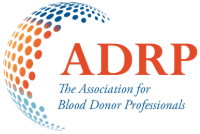Communicating the move to individualized donor selection policy: Framing messages focused on recipients and safety
Authors
Eamonn Ferguson, Sarah Bowen, Claire Lawrence, Chris Starmer, Abigail Barr, Katy Davison, Claire Reynolds, Susan R Brailsford
Abstract
Background
Men-who-have-sex-with-men (MSM) have been deferred from donating blood. However, recent evidence supports the adoption of donor screening based on individuals’ sexual behavior over population-based criteria. We explore how best to frame communications about adopting this change to minimize any potential negative consequences (e.g., reduced donor numbers). We examine the effectiveness of risk (emphasizing safety vs. emphasizing low risk), and focus (donor vs. recipient) frames on intentions to donate blood (approach) or feeling deterred from donating (avoid), and mechanisms linked to under-reporting sexual behavior.
Study Design and Methods
We conducted a 2 (risk frame: risk vs. safety) by 3 (focus: donor vs. recipient vs. both) between-subjects online experiment (n = 2677). The main outcomes were intentions to donate and feelings of being put-off/deterred from donating (both for self and others). We also assessed the extent that forgetting, embarrassment/shame, and question irrelevance were perceived to be associated with under-reporting sexual behavior.
Results
Frames that focused on safety or a recipient resulted in people reporting being less deterred from donating. Regardless of frame, people from ethnic minorities were more likely to feel deterred. Embarrassment/shame followed by forgetting and perceived irrelevance were the main reasons for under-reporting sexual behaviors, especially in ethnic minorities, and smartphones were perceived as an acceptable memory aid for sexual behavior.
Discussion
Blood services moving to an individualized policy should frame donor selection in terms of safety and/or a recipient focus, explore sensitivities in ethnic minority communities, consider ways to normalize reporting sexual behavior, and use smartphones as a memory aid.
August 18, 2022
Related Resources
Engaging blood donors as advocates Social media preferences and associations with marketing
Background: Various critical medical procedures would become impossible without blood donations—saving lives in emergencies, surgeries, and chronic conditions like thalassemia. Therefore, it seems crucial to enhance donor recruitment and ensure…
Rethinking the role of older donors in a sustainable blood supply
INTRODUCTION Many countries, particularly high human development index countries, are facing the challenge of an aging population.1 For Blood Collection Agencies (BCAs) in these countries, an aging population poses two…


